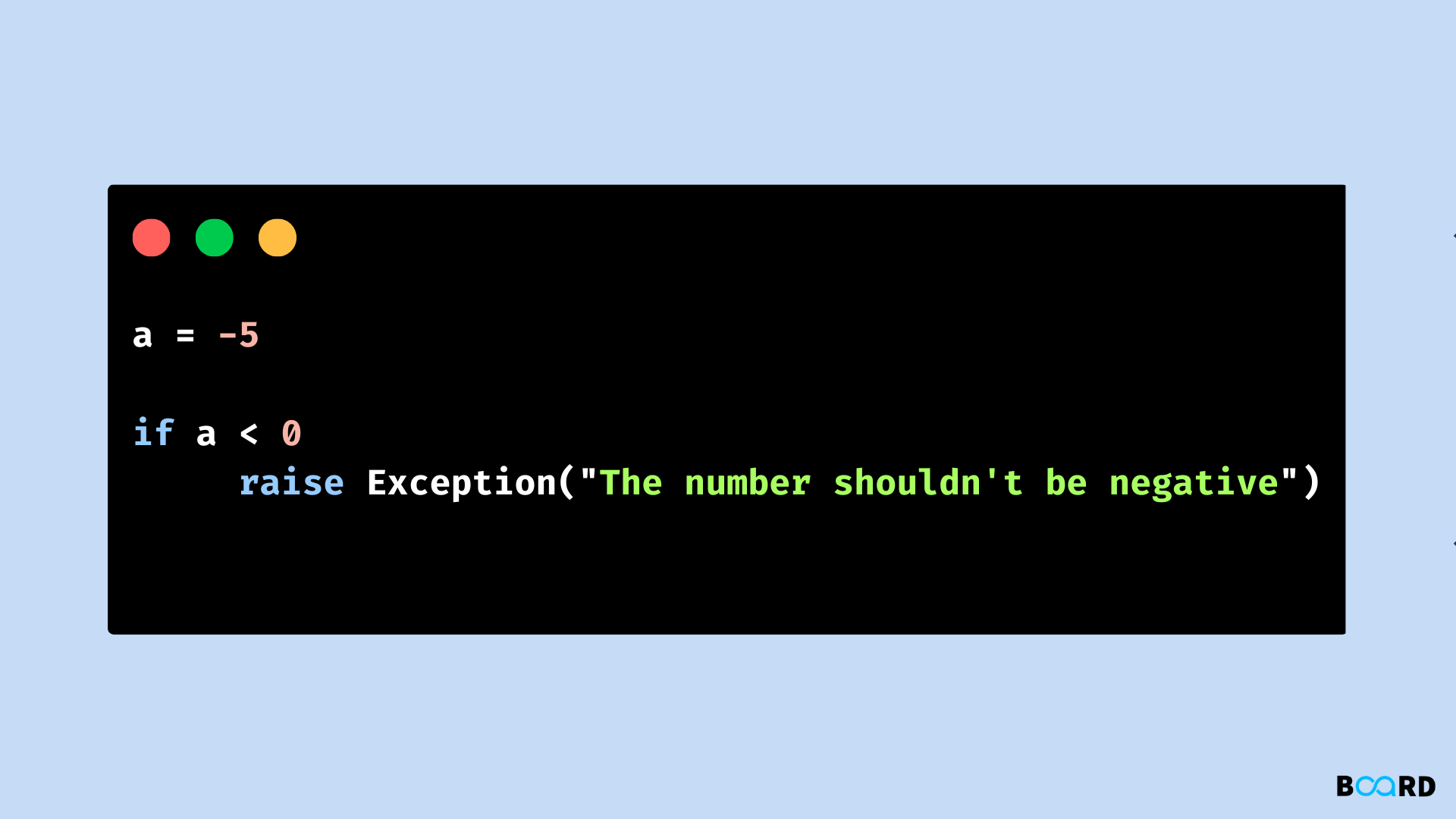
Introduction
The raise keyword is used to raise an exception. You can define what kind of error to raise, and the text to print to the user.
except is a keyword (case-sensitive) in python, it is used to raise an Exception/Error with a customized message and stops the execution of the programs.
It is very useful when you want to work with the input validations. For example – if you are working with the positive numbers and someone inputs a negative number, in this case, we can raise an error and stop the program’s execution.
Syntax of raise keyword
Example 1
Output:
Example 2
Taking a simple usage example:
Output:
If you have a piece of code where along with exception handling you have put in place some conditional statements to validate input etc, then in case of the conditions failing we can either just print a message or simple raise an exception which can then get handled by the common exception handling mechanism.
See the code below,
Consider the above code where we have handled ZeroDivisionError, in this code we want to add a new validation for restricting user from inputting negative values.
Then we can simply add a new condition and use the raise keyword to raise an exception which is already handled.
By this example we want to explain to you why and where we should use raise keyword to explicitly raise an exception.
raise Without Specifying Exception Class
When we use the raise keyword, it's not necessary to provide an exception class along with it. When we don't provide any exception class name with the raise keyword, it reraises the exception that last occurred.
This is used generally inside an except code block to reraise an exception which is catched.
For example,
Output:
raise With an Argument
We can also provide an argument while raising an exception which is displayed along with the exception class name on the console.
We can pass any string for describing the reason for the exception or anything else.
Output:
